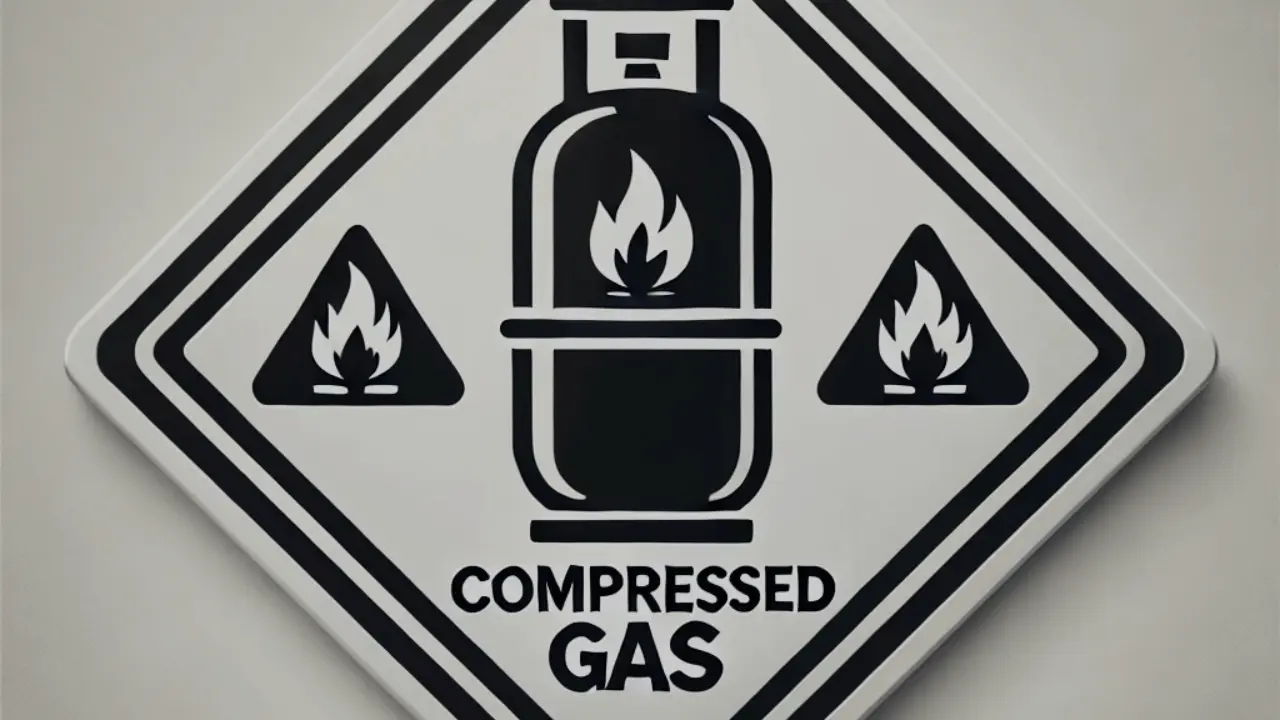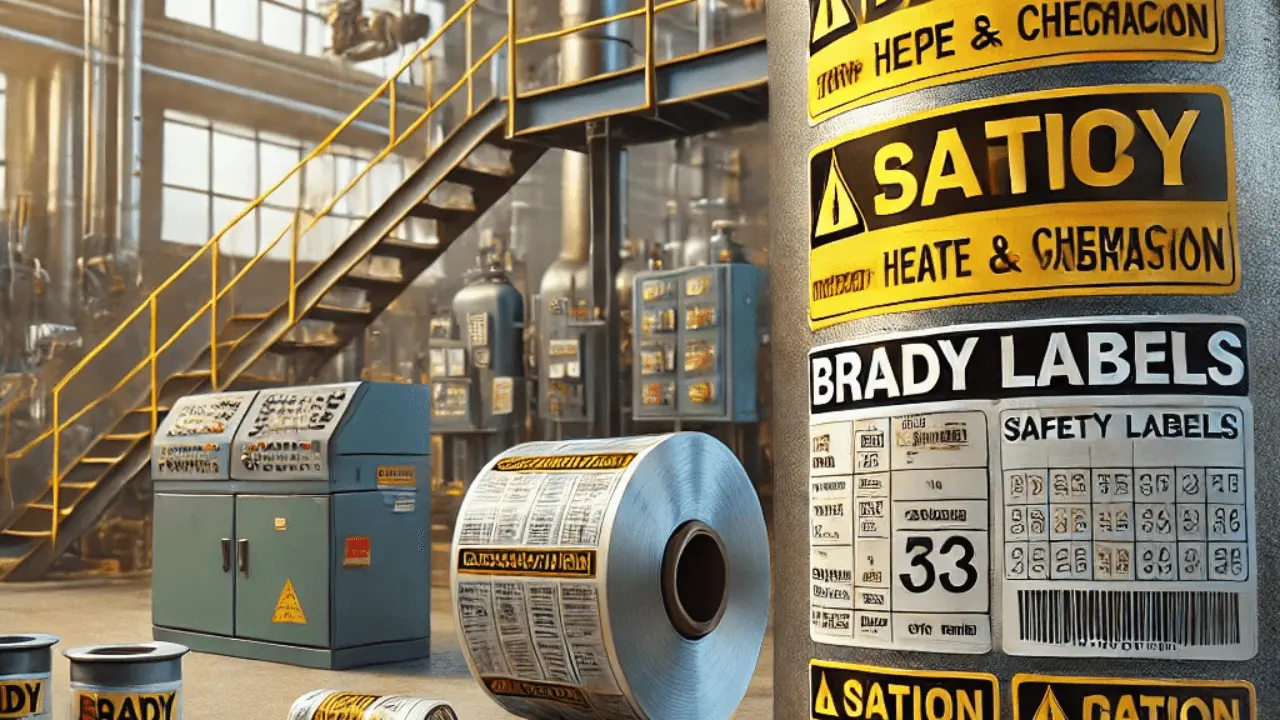Compressed Gas Symbol is a safety icon identifying containers holding gases under high pressure. This symbol helps alert individuals to the potential hazards of compressed gases, which can be dangerous if mishandled. It is commonly seen on labels, safety signs, and chemical data sheets to ensure safe handling and transport in various industries.
The Role of the Compressed Gas Symbol
The role of Compressed Gas Symbol ensures safety when handling pressurized gas containers. This symbol, typically found on labels and safety signage, alerts workers and handlers to the potential hazards of gases stored under high pressure. Users may recognize these containers and take the appropriate safety measures to prevent mishaps like explosions or leakage.
Compressed Gas Symbols are crucial to worker safety in many industries, including manufacturing, healthcare, and labs. They are standardized by regulatory agencies like OSHA and GHS, guaranteeing uniformity in safety procedures. Thanks to this sign, everyone, including emergency responders and employees, can better grasp the dangers of compressed gases.
Example: The sign facilitates prompt identification and appropriate action in the case of a gas leak. Familiarity with this sign is critical to safeguarding health and guaranteeing safe operations in pressurised gas settings (OSHA, 2020).
Who Regulates the Use of the Compressed Gas Symbol?
Compressed Gas Symbol is subject to regulations from some crucial organizations that establish safety guidelines to safeguard the public and employees. In the US, the Occupational Safety and Health Administration, or OSHA, is primarily responsible for implementing workplace safety laws, including those about compressed gases and other dangerous compounds.
The Globally Harmonized System (GHS), which unifies chemical labelling globally to guarantee uniformity and safety, includes the Compressed Gas Symbol. Guidelines for the symbol’s appearance on labels, packaging, and safety data sheets are provided by the GHS.
These rules are intended to ensure the proper safety measures are followed and to assist in identifying any hazards related to compressed gases, such as explosions or leaks. Industries can lower the risk of accidents and safeguard employees by adhering to these recommendations (OSHA, 2020; GHS, 2021).
How Do You Properly Handle Compressed Gases?
The Compressed Gas Symbol is crucial for spotting risks, and treating compressed gases correctly is vital for safety. Before handling compressed gases, always ensure containers bearing the Symbol, which denotes high pressure, are adequately labelled. Keep gas cylinders out of direct sunlight and heat sources and in well-ventilated spaces to prevent hazardous pressure buildup.
Use the right equipment and regulators for the gas to prevent leaks and mishaps. Always check the cylinder for damage before using it. Adhere to industry norms and regulations issued by regulatory agencies such as OSHA and GHS to guarantee safe handling. Identifying and honouring the compressed gas symbol can ensure a safe working environment and reduce hazards (OSHA, 2020; GHS, 2021).
Importance of the Compressed Gas Symbol
The Importance of Compressed Gas Symbol lies in its ability to warn of the presence of high-pressure gasses, which may be dangerous if mishandled. This sign makes it easier for employees and first responders to spot containers containing compressed gases, such as oxygen or propane, and to take the appropriate safety measures.
Related post: Visit the website.
The Globally Harmonized System (GHS) guarantees uniform labelling across sectors. The GHS includes the Compressed Gas Symbol, which is used globally. By identifying this sign, people can avoid mishaps such as leaks, explosions, or injuries. Preserving a safe working environment is crucial, particularly in manufacturing, healthcare, and research (OSHA, 2020; GHS, 2021).
What Are the Risks Associated with Compressed Gas?
Compressed Gas Symbol is essential for recognizing and controlling the hazards related to compressed gases.” Awareness of these dangers contributes to safety in areas with these gasses.
Risks Associated with using Compressed Gas:
Explosion Hazard
If a pressurized gas cylinder is damaged or exposed to excessive heat, it may explode, causing significant damage and harm. The Compressed Gas Symbol alerts people to this dangerous circumstance.
Toxicity
A leak of some compressed gases might endanger the health of everyone in the vicinity. The Compressed Gas Symbol, which aids in identifying these gases, issues security measures to prevent exposure.
Asphyxiation
Asphyxia is possible when gases, such as nitrogen, replace oxygen in the atmosphere. The compressed gas symbol makes people aware of these gasses, particularly in tight settings.
Fire Hazard
Acetylene and propane are two examples of highly flammable compressed gases. As the Compressed Gas Symbol indicates, handling these compounds requires special attention.
Pressure Risks
Gases kept at high pressure can be hazardous if mishandled. The Compressed Gas Symbol warns about the possible risks of storing high-pressure gases.
The Compressed Gas Symbol reduces these dangers and guarantees safer operations in compressed gas environments (OSHA, 2020; GHS, 2021).
Safety Tips for Handling Compressed Gas Containers
The Compressed Gas Symbol is essential for safety when handling compressed gas canisters. This sign denotes the high pressure of the gas within, which calls for cautious handling. Keep cylinders out of direct sunlight and away from heat sources like flames to prevent pressure development.
The compressed Gas Symbol is visible, and the cylinder is securely fastened to avoid rolling or tipping. The right valves and regulators are compatible with the gas. To stop leaks C,hcheckontainers foregularly r corrosion and deterioration rYou can reduce the chance of mishaps by heeding these safety instructions and being aware of the Compressed Gas Symbol (OSHA, 2020; GHS, 2021).
Conclusion:
The Compressed Gas Symbol is an essential safety tool that helps identify containers with high-pressure gases. By recognizing this symbol, individuals can take necessary precautions to prevent accidents such as explosions, leaks, or asphyxiation. Understanding its significance and following safety guidelines ensures a safer environment when handling compressed gases, protecting both workers and the surrounding community (OSHA, 2020; GHS, 2021).




